Sailors Salute USS Indianapolis Survivors
Navy News | PO2 Matt Grills | July 16, 2007
Indianapolis, IN. -- Sailors and Marines honored survivors of USS Indianapolis (CA 35) on July 7 at a parade and private ribbon-cutting ceremony for a new gallery chronicling the Navy’s worst disaster at sea.
At the Indiana War Memorial, Sailors from Navy Operational Support Center (NOSC) Indianapolis piped aboard 40 of the World War II cruiser’s remaining 80 survivors.
The Indianapolis is best known for delivering components of the atomic bombs to Tinian in the Mariana Islands during the final days of the war. Headed to Leyte, an island in the Philippines, the Indianapolis was torpedoed and sunk by a Japanese submarine just after midnight on July 30, 1945. Of the 1,200-man crew, about 800 were believed to have survived the initial sinking. But after waiting for rescue five days in shark-infested waters, only 317 were found alive.
“It makes me very emotional to know what these men went through,” said Hospital Corpsman 1st Class Jennifer Monroe-Johnson, who saluted each survivor as they entered the Indianapolis exhibit. “They took time to thank me for my service when they did so much more.”
Set to open to the public in August, the USS Indianapolis Gallery features a detailed scale model of the cruiser, pennants, commissioning postcards, programs and photographs of President Franklin D. Roosevelt's 1936 embark, and a war bulletin notifying the ship of the Pearl Harbor attack.
In a brief ceremony, Indiana Lt. Gov. Becky Skillman and Indianapolis Mayor Bart Peterson welcomed survivors to the Indiana War Memorial.
“We are proud of our namesake’s place in World War II history,” said Skillman, who declared the entire Indianapolis crew honorary Hoosiers. “You are important players in our state’s history.”
Personnelman 3rd Class Jonathan Rome helped cut the ribbon to the long-awaited gallery, greeting survivors as they entered.
“It’s great to see them,” he said. “A lot has changed in the Navy, but our uniform continues to mean a lot to them. You can see it in their eyes.”
Paul McGinnis of Wheeling, W.Va., who served as a signalman aboard the Indianapolis, declared the exhibit to be first class. He said he appreciated the military’s presence at the event.
“It’s nice to know we still have Sailors today,” McGinnis said. “I’m Navy all the way.”
Earlier in the day, hundreds of people lined the streets of the city’s downtown for a parade honoring the Indianapolis survivors. Riding in a fleet of classic cars, the survivors waved to hundreds of cheering onlookers as about 30 Navy Sailors marched behind them.
“Even being associated with these men is an honor,” said Chief Yeoman Henry Harris. “It touches a spot deep down, making you proud to be an American. I tease them, reminding them that they’re still Sailors and shouldn’t get too rowdy. When they get together, they have a great time.”
The reunion ended with a remembrance service at the USS Indianapolis Memorial beside the city’s downtown canal. Sailors and Marines escorted survivors to their seats and presented each with a red rose.
Marine Staff Sgt. Aaron Conger walked beside Earl Riggins, one of nine survivors of the Indianapolis’ 39-man Marine detachment.
“Three of them came this year,” Conger said. “They love seeing the Marines out here. Whenever they spot us, they stop us and tell us stories. They have nothing but praise and thanks for us. They remind me why I do what I do.”
Riggins called it an honor to meet his modern-day Marine Corps counterparts.
“They’re all dedicated people,” he said. “They do their job as we did ours. They’re the cream of the crop.”
Capt. William Toti, who commanded the submarine USS Indianapolis (SSN 697), a Los Angeles-class submarine, spoke, calling the survivors’ story the stuff of legend.
“You have inspired us with great examples of courage and perseverance,” he said. “We are among the few -- the very few -- to have had the privilege of knowing you. How lucky we are to be in your presence.”
Toti said that just as World War II was a struggle for America’s survival, so is the current global war on terrorism.
“You show us that sacrifice for your nation is not a spectator sport,” he said. “If you were able to persevere in 1945, how can we not?”
The morning was especially poignant for Construction Mechanic Apprentice Trevor Buckett, who traveled from Port Hueneme, Calif., to be at the memorial service. Buckett’s grandfather, Victor, survived the Indianapolis sinking.
“I wouldn’t have missed this for the world,” Buckett said. “He’s one of the reasons I joined the military. These guys are my heroes.”
At the Indiana War Memorial, Sailors from Navy Operational Support Center (NOSC) Indianapolis piped aboard 40 of the World War II cruiser’s remaining 80 survivors.
The Indianapolis is best known for delivering components of the atomic bombs to Tinian in the Mariana Islands during the final days of the war. Headed to Leyte, an island in the Philippines, the Indianapolis was torpedoed and sunk by a Japanese submarine just after midnight on July 30, 1945. Of the 1,200-man crew, about 800 were believed to have survived the initial sinking. But after waiting for rescue five days in shark-infested waters, only 317 were found alive.
“It makes me very emotional to know what these men went through,” said Hospital Corpsman 1st Class Jennifer Monroe-Johnson, who saluted each survivor as they entered the Indianapolis exhibit. “They took time to thank me for my service when they did so much more.”
Set to open to the public in August, the USS Indianapolis Gallery features a detailed scale model of the cruiser, pennants, commissioning postcards, programs and photographs of President Franklin D. Roosevelt's 1936 embark, and a war bulletin notifying the ship of the Pearl Harbor attack.
In a brief ceremony, Indiana Lt. Gov. Becky Skillman and Indianapolis Mayor Bart Peterson welcomed survivors to the Indiana War Memorial.
“We are proud of our namesake’s place in World War II history,” said Skillman, who declared the entire Indianapolis crew honorary Hoosiers. “You are important players in our state’s history.”
Personnelman 3rd Class Jonathan Rome helped cut the ribbon to the long-awaited gallery, greeting survivors as they entered.
“It’s great to see them,” he said. “A lot has changed in the Navy, but our uniform continues to mean a lot to them. You can see it in their eyes.”
Paul McGinnis of Wheeling, W.Va., who served as a signalman aboard the Indianapolis, declared the exhibit to be first class. He said he appreciated the military’s presence at the event.
“It’s nice to know we still have Sailors today,” McGinnis said. “I’m Navy all the way.”
Earlier in the day, hundreds of people lined the streets of the city’s downtown for a parade honoring the Indianapolis survivors. Riding in a fleet of classic cars, the survivors waved to hundreds of cheering onlookers as about 30 Navy Sailors marched behind them.
“Even being associated with these men is an honor,” said Chief Yeoman Henry Harris. “It touches a spot deep down, making you proud to be an American. I tease them, reminding them that they’re still Sailors and shouldn’t get too rowdy. When they get together, they have a great time.”
The reunion ended with a remembrance service at the USS Indianapolis Memorial beside the city’s downtown canal. Sailors and Marines escorted survivors to their seats and presented each with a red rose.
Marine Staff Sgt. Aaron Conger walked beside Earl Riggins, one of nine survivors of the Indianapolis’ 39-man Marine detachment.
“Three of them came this year,” Conger said. “They love seeing the Marines out here. Whenever they spot us, they stop us and tell us stories. They have nothing but praise and thanks for us. They remind me why I do what I do.”
Riggins called it an honor to meet his modern-day Marine Corps counterparts.
“They’re all dedicated people,” he said. “They do their job as we did ours. They’re the cream of the crop.”
Capt. William Toti, who commanded the submarine USS Indianapolis (SSN 697), a Los Angeles-class submarine, spoke, calling the survivors’ story the stuff of legend.
“You have inspired us with great examples of courage and perseverance,” he said. “We are among the few -- the very few -- to have had the privilege of knowing you. How lucky we are to be in your presence.”
Toti said that just as World War II was a struggle for America’s survival, so is the current global war on terrorism.
“You show us that sacrifice for your nation is not a spectator sport,” he said. “If you were able to persevere in 1945, how can we not?”
The morning was especially poignant for Construction Mechanic Apprentice Trevor Buckett, who traveled from Port Hueneme, Calif., to be at the memorial service. Buckett’s grandfather, Victor, survived the Indianapolis sinking.
“I wouldn’t have missed this for the world,” Buckett said. “He’s one of the reasons I joined the military. These guys are my heroes.”



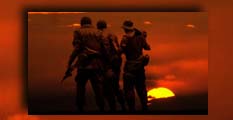

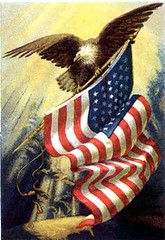





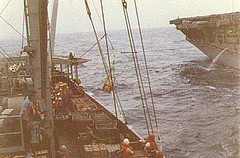
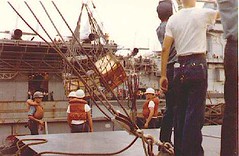
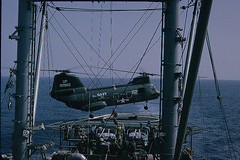
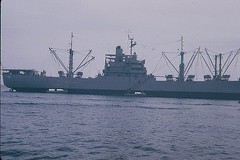






0 Comments:
Post a Comment
<< Home